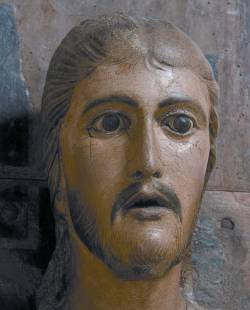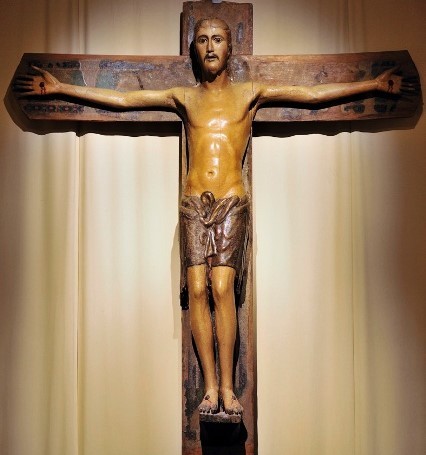
- On 5 January 2016
- In Senza categoria @en
- Tags: Senza categoria, crucifix, Senza categoria, Middle Ages, Petrognano, Semifonte, wooden sculpure
Certaldo – The mystery of the Crucifix of Petrognano
The village of Certaldo is an important milestone for those who wish to visit Tuscany. Among the ancient walls of its churches you can find well-preserved treasures, alone worth visiting the hometown of the 14th-century writer Giovanni Boccaccio.
A few meters from the tower that belonged to the Machiavelli family, along the main street, you can find the medieval church of Saints Jacopo and Filippo, which once belonged to the Augustinian friars. Their convent, now a museum, was just a few meters away.
Inside the church, looking towards the altar, our eyes meet those of the “Christ of Petrognano“, they are wide open, almost alive. It is an extraordinary sculpture carved in wood representing a life-sized crucified Christ.
Let’s have a look at this sculpture, at its soft curl hair, its mouth slightly open up to the carefully moulded chest: to our surprise we find out that this Christ is by no means stuck in the wood where it was carved, on the contrary it is enlivened by a vital breath, a wave of life made more intense by the brush strokes of the skilled painter who worked out the details of its figure, from the eyes to the head hair and also the thin hair of its beard and “Saracen” moustache. The Christ’s feet are not overlapping but separate, each pierced by a nail.
What we have before us is a Christ that triumphs over death (as shown by Jesus’ open eyes and also by his erect body and head posture) but who is also extraordinarily human, as show by the naturalism of his carved body.
The beauty and charm of this sculpture are equal to the mystery surrounding its origin: the crucifix was found at the end of the 19th century in the little church of San Pietro a Petrognano, on the hill where once stood the city of Semifonte, destroyed by the Florentines in 1202. From the very beginning, it was clear that it was not the original location of the sculpture, cut at the ends of the cross to be adapted to the small building where it was placed.
Where does the Christ of Petrognano come from? And most of all, can we find out when it was carved despite the lack of documents or statements about its origin?
Our Professional Guides will answer to these and many more questions: book your guided tour in Certaldo now and discover with us the mystery of the Crucifix of Petrognano!



